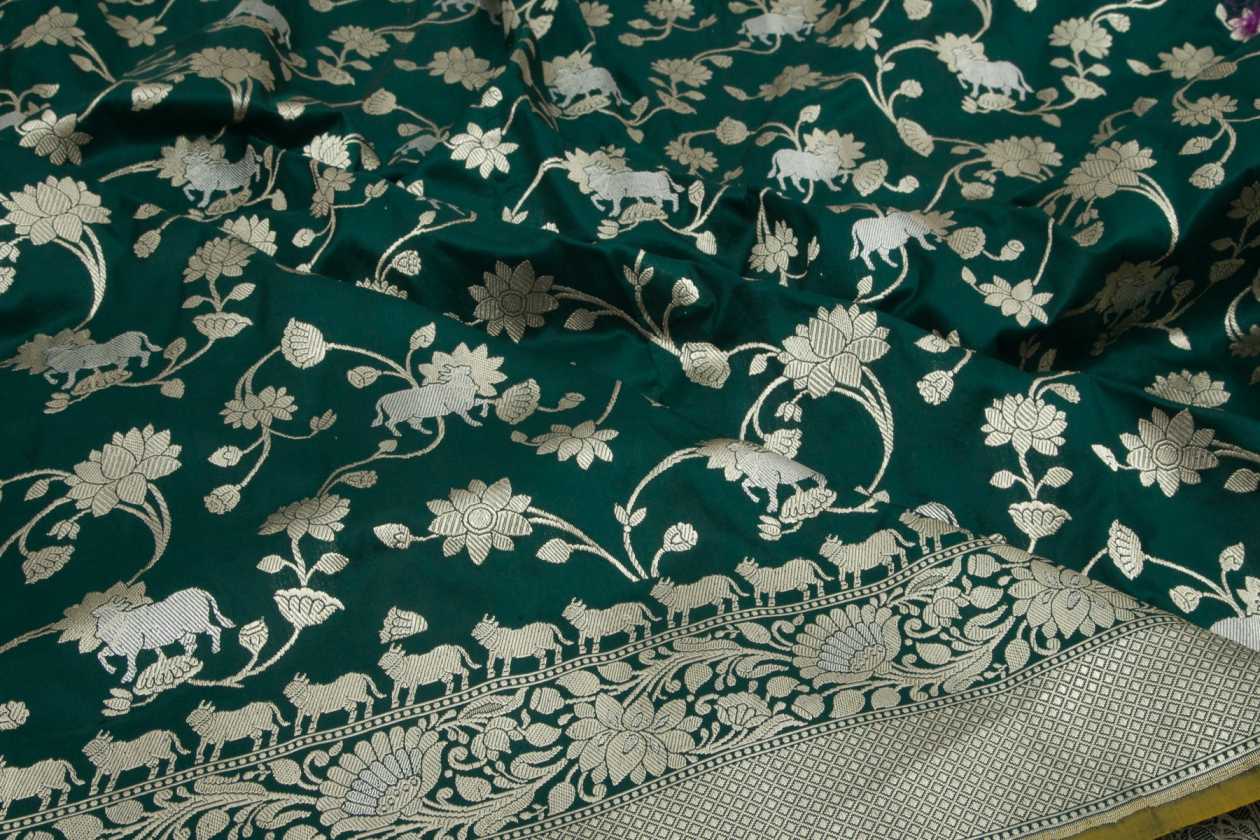An Overview of India's Textile Industry In 2022



The textile industry is one of the oldest business options in India since the ancient age. Different types of textile fibers are produced in India, among which cotton, jute, silk, and wool are the major ones. Both skilled laborers and unskilled officials are needed to run this business smoothly. Thus, the textile industry serves as the platform offering a huge number of employment opportunities to eligible people in India. The products of the Indian textile industry with the traditional designs and textures are very popular all over the world. People associated with this industry hope to see a great comeback in 2022, overcoming the setback during the past 2 years due to the pandemic situation.
Several obstacles faced by the Indian textile industry recently
- In the last financial year, the pandemic was still at a great height that eventually led to the closure of several manufacturing units in the textile industry. These factory owners were forced to close due to the shortage of manpower. The lack of funds to buy raw materials for production was another drawback in this industry.
- According to the government rules, all textile factories had to work with only 50% manpower. Thus, these companies could not meet the deadlines of bulk orders, though such orders were rare to receive at that time.
- The Indian government imposed new GST with higher rates on industries. So, the textile industry now finds it harder to pay the taxes on their sales. Therefore, business owners are quite agitated due to its negative impact.
- Political tensions or militant activities in some places hinder the smooth operations of the textile industry there. Many textile companies face severe labor shortages and a lack of regular transportation if their factories are located in remote places.
- The government provides financial support only to small and medium-scale companies. Hence, many business owners do not strive for further growth of their textile companies to keep on receiving those benefits.
- Cotton textile is the major player in the Indian textile industry. The price of cotton has risen too much now, which is a major setback for textile industry owners. They find it hard to maintain their supply chain due to this price hike.
- The inflation in the Indian economy results in frequent demands among laborers for salary hikes. Thus, industry owners do not find the means to expand their business and compete with global textile leaders from other countries.
- Common laborers do not have the skills to produce the best textile designs. They are not formally trained in textile manufacturing and learn only while working here. This practice has a negative effect on the quality of end products manufactured by these textile companies.
- Many textile business owners lack updated knowledge of the modern trend. Hence, they cannot produce stylish products that will satisfy global customers.
- The high cost of power in India is another hindrance to textile production. Most modern machines are power-driven, which raises the overall production costs for business owners.
- Unfavorable government policies in India also obstructed the growth of the textile industry. But other countries provide more support to their textile businesses. Thus, the textiles of India cannot compete with them in the global market.
Useful measures taken by the government for the Indian textile industry

Fortunately, the Indian government has taken a series of positive steps to support the textile industry in this country. The Union Ministry of Textiles is more active in developing the textile industry, by constant coordination with business owners of this sector. The Union Budget for 2022 – 23 also announced some benefits that can help in the growth of the Indian textile industry.
- The government has launched an Emergency Credit Line Guarantee Scheme. The aim of this scheme is to provide funds to micro and small textile business owners. This will help them to invest in increasing their production and minimize the effect of the pandemic. This scheme will be available till March 2023, with a huge guarantee cover.
- The Indian government has several portals for the welfare of laborers. Udyam, NCS, e-Shram, and ASEEM are the government portals that help people in finding employment in various MSMEs. All these portals are now interlinked to help business owners in finding manpower.
- The existing Credit Guarantee Trust for Micro and Small Enterprises is improved by adding more funds for textile business owners. Thus, they can spend more to expand their businesses and earn more revenue.
- The Indian government has allowed 100% Foreign Direct Investment (FDI) in the textile industry. Thus, it will be easier for small companies to grow and export their products to other countries.
- The National Technical Textiles Mission was proposed in the Union Budget for 2020 -21. It will be active till 2023 – 24 with an estimated expense of Rs 1480 crore for the betterment of the textile industry.
- The government has made the packaging of food grains, sugar, and other dry food materials only in jute sacks. This will boost the jute textile with better business profits in India.
- The rates of incentives for the exports of readymade garments and dress materials are increased from 2% to 4% by the Directorate General of Foreign Trade. Thus, textile industry owners can expect more profits by exporting their products now.
- The Indian government also approved the Integrated Wool Development Programme (IWDP) to support the production of woolen garments. The quality and production speed of woolen garments are also expected to improve with the use of high-quality materials.
- Scheme for Capacity Building in Textile Sector (SCBTS) is launched by the Cabinet Committee on Economic Affairs. An estimated expense of Rs 1300 crore was designated for this scheme, for the skill development in the textile industry.
- The Union Finance Minister has emphasized the development of infrastructure and the setting of centralized Effluent treatment plants for the textile industry. So, funds are allotted in the current budget for these purposes, for the best interest of this industry in India.
- The government has drawn certain schemes for farmers growing silk and cotton in India. This support provided for the promotion of Sericulture and cotton farming has decreased the prices of silk and cotton fibers. Thus, the availability of raw materials at lower prices has made it easier for textile industries to deal with these fibers.
- Production-linked incentive (PLI) scheme is launched for promoting the apparel industry, as stated by the Secretary of Textiles Ministry Upendra Prasad Singh.
- Prime Minister Mega Integrated Textile Region and Apparel (PM MITRA) is another beneficial scheme created for the betterment of the infrastructure of the textile industry.
The future of the Indian textile industry in 2022 and beyond
India is now recognized as the largest producer of cotton and jute garments in the world. There is tough competition from China, Bangladesh, Pakistan, and Vietnam for exporting textile products in the global market. However, the Indian textile industry still manages for a comeback even after the decline of the business in 2020 – 21. Since the textile industry not only comprises large textile mills and high-end garment boutiques, self-employed artisans from rural areas are also promoted through government schemes, like MGNREGA. Many rural cooperatives and NGOs are also providing support to people working on a small-scale for the textile industry.
All garment manufacturing units are returning to the normal state though at a slow pace at present. The Indian textile industry is aiming to export products worth $40 to $100 billion within 2027. These garment units are fast expanding in size and investments, to meet the bulk orders pouring in from various foreign countries in the west. The promotion of this industry through several government schemes has been the greatest in the last three decades. The apparel industry is progressing fast with the manufacturing of more varieties of products. This textile business is also spreading in more countries across the world, leading to more earning of foreign money.
Narendra Goenka, the chairman of the Apparel Export Promotion Council has confirmed this speedy growth of the textile industry in India after the pandemic situation. A Comprehensive Economic Partnership Agreement is signed between India and the United Arab Emirates in February 2022, in terms of the exports of textiles and jewelry. The textile units based in Noida and Tirupur have taken the responsibility of meeting the export demands, which will start from May 2022. So, these units will increase their manpower up to 30%, due to which more skilled people will get employment there.
The technical matters of the textile industry have improved a lot in recent years. However, the Indian textile industry still needs to progress in the research and development of designs. The quality of raw materials also needs to be upgraded for the production of the best quality garments. Now, the textile industry contributes 5% to the GDP from domestic trade and 7% from foreign exports. However, these values are expected to increase this year, making this industry one of the leaders in the Indian economy.



















